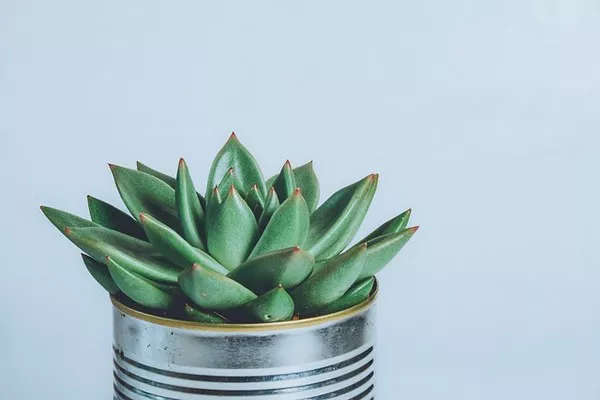Succulents have taken the world by storm in recent years, and for good reason. These unique plants are not only visually appealing but also relatively low-maintenance, making them an attractive choice for both novice and experienced gardeners. While succulents are celebrated for their resilience and adaptability, they are not immune to the passage of time. Many enthusiasts are often left wondering, “How long do succulents take to grow?” The answer is not as simple as one might think. In this comprehensive guide, we will explore the various factors influencing succulent growth and provide insights into their development timeline.
The Growth of Succulents: A Slow and Steady Journey
Succulents, with their fleshy leaves and distinct appearance, are known for their slow growth. Unlike many other plants, succulents have adapted to arid and challenging environments, which has influenced their growth strategy. Their growth rate is determined by a complex interplay of factors that can be categorized into three main areas: species-specific, environmental, and care-related factors.
Species-Specific Factors
To understand the growth timeline of succulents, it’s essential to consider the specific species you are cultivating. Different succulent species have distinct growth rates, sizes, and patterns. Some species, such as the common Echeveria and Sempervivum, tend to grow relatively quickly, while others, like the Agave and Aloe Vera, have slower growth rates.
Echeveria and Sempervivum, popular for their rosette shapes, typically take around 6 to 12 months to grow from a small cutting or seedling to a mature plant. On the other hand, Agave and Aloe Vera may take several years to reach their full size. As such, it’s crucial to be aware of the specific species you are cultivating and set your expectations accordingly.
Environmental Factors
Succulents have evolved to thrive in arid and often harsh environments, which significantly influences their growth rate. These environmental factors include light, temperature, humidity, and soil conditions. Let’s explore how each of these factors affects succulent growth.
Light: Adequate light is essential for the growth of succulents. Most succulents require bright, indirect sunlight for optimal growth. Without the right amount of light, they can become etiolated, elongating their stems to reach for light. Under ideal conditions, succulents can grow at a consistent rate, producing new leaves or stems over time.
Temperature: Succulents are also influenced by temperature. They are sensitive to extreme cold and may slow down their growth or go dormant during the winter months. As temperatures warm up in the spring and summer, they tend to grow more actively. Maintaining the right temperature range for your succulents is crucial for ensuring steady growth.
Humidity: Succulents are adapted to low-humidity environments. High humidity can hinder their growth and increase the risk of fungal diseases. To promote healthy growth, ensure that the humidity levels in your growing environment are appropriate for the species you’re cultivating.
Soil Conditions: Well-draining soil is vital for succulent growth. Soil that retains too much moisture can lead to root rot, which can impede their development. A well-draining mix allows water to pass through quickly, preventing excess moisture around the roots. This helps maintain the health and growth of your succulents.
Care-Related Factors
The care you provide to your succulents plays a significant role in their growth timeline. Proper care includes watering, feeding, and maintenance practices.
Watering: Overwatering is one of the most common mistakes made when caring for succulents. These plants are adapted to withstand periods of drought, storing water in their leaves and stems. Watering too frequently or allowing them to sit in waterlogged soil can slow down growth or even lead to root rot. The key is to water them sparingly but thoroughly, allowing the soil to dry out between watering sessions.
Feeding: Succulents benefit from occasional fertilization, especially during their active growing season in spring and summer. However, over-fertilization can have adverse effects. Use a balanced, diluted succulent fertilizer and follow the recommended guidelines to ensure healthy growth.
Maintenance: Regular maintenance, such as removing dead or damaged leaves, is essential for succulent health and growth. Pruning and propagating your succulents can also promote a more compact and vigorous growth pattern.
Understanding Growth Phases
To comprehend the timeline of succulent growth better, it’s helpful to break it down into distinct phases:
Establishment Phase: In the first few weeks to months after propagation or planting, succulents focus on establishing their roots. This phase is crucial, as strong, healthy roots are the foundation for future growth.
Growth Phase: Once the roots are well-established, the succulent enters the growth phase. During this period, it will produce new leaves or stems, increasing in size and vitality. The rate of growth varies by species, environmental conditions, and care practices.
Dormancy Phase: Many succulents go dormant during the winter or in response to adverse conditions. Growth slows down, and some species may even stop growing entirely. This is a natural part of their life cycle, and they will resume active growth when conditions improve.
Reproduction Phase: Succulents often reproduce through offsets, pups, or seeds. This phase can occur at any point in the succulent’s life, depending on the species and environmental factors. Reproduction can take several months to a year or more.
Conclusion
Succulents are celebrated for their unique beauty and adaptability. While they are known for their slow growth, the timeline for their development varies significantly based on species, environmental conditions, and care-related factors. Understanding these elements is essential for successfully growing and caring for succulents.
In your journey with succulents, remember that patience is key. Growth may not be immediately evident, but with the right care and attention, you can watch your succulents flourish over time. By providing the right light, temperature, humidity, and soil conditions, along with proper watering, feeding, and maintenance, you can ensure that your succulents grow to their full potential.
In the world of succulents, it’s not just about the destination; it’s also about the journey. Embrace the slow and steady growth of these remarkable plants, and you’ll be rewarded with a stunning and thriving succulent collection.


